When the first Shogun: Total War came out, its real-time battles made you feel like you were playing through the epic battle scenes from one of Akira Kurosawa's samurai films. Shogun 2 is like playing through a new, remastered edition of that game, complete with both the character dramas and the enormous battles. Merging beautiful graphics, scheming generals, improved multiplayer options, and deep strategic gameplay with countless small details that imbue it with historical flavor and drama, Shogun 2 is one of the most captivating strategy games ever made.
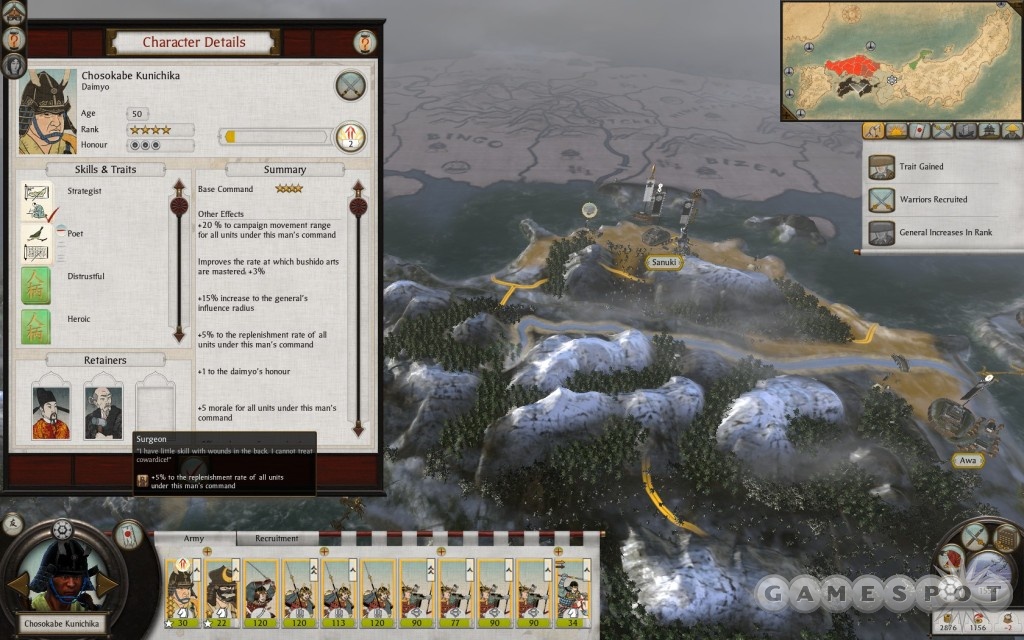
Like the previous Total War games, Shogun 2 combines a turn-based strategy mode with tactical, real-time battles. The turn-based portion of the game takes place on a gorgeous strategic map that, although limited to the country of Japan (minus Hokkaido), feels every bit as epic as the continent-spanning maps of previous iterations in the series. It is on this magnificent 60-province map of Japan that you make all of your strategic decisions, manage your dynasty, research technologies, build improvements like roads and farms, and direct your armies. When an army engages in combat, you can either use the auto-resolve feature or fight things out in fantastic real-time battles. The goal during real-time battles is to route the enemy army as an attacker and hold out as a defender. Either way, you have to make intelligent use of terrain and unit abilities, keep your flank adequately protected, and do your best to sap the enemy units' morale before they can get the upper hand.
Shogun 2's turn-based single-player campaign stands on its own merits as an excellent strategy game. You play as an ambitious daimyo, or leader, of one of the 10 most powerful clans in Japan. Each clan has unique strengths that you have to master if you plan to capture Kyoto, the nation's capital city, and unify Japan as its new shogun. For instance, the Chosokabe have superior bow infantry, while the Mori are master shipwrights, and the Hojo get building construction bonuses. The choice of clan is an easy one compared to the many difficult decisions you have to make during the campaign. One example is the allocation of your research efforts, which must be carefully divided between the chi and Bushido arts (the civilian and military tech trees, respectively). A strong economy based on chi is needed to pay for a powerful army's upkeep, but a narrowly focused autocrat, however enlightened, may be overrun by a militaristic brute. Furthermore, sound economic planning is necessary for success. Your economic potential and buildable units are limited by the types of buildings in your provinces. The size of a province's castle determines the number of possible buildings that may be constructed there. Since larger castles consume more food, you have to carefully plan your upgrades lest you inadvertently cause mass starvation. Temporary prosperity is possible through honorable trade relations with other clans, but these arrangements rarely last.
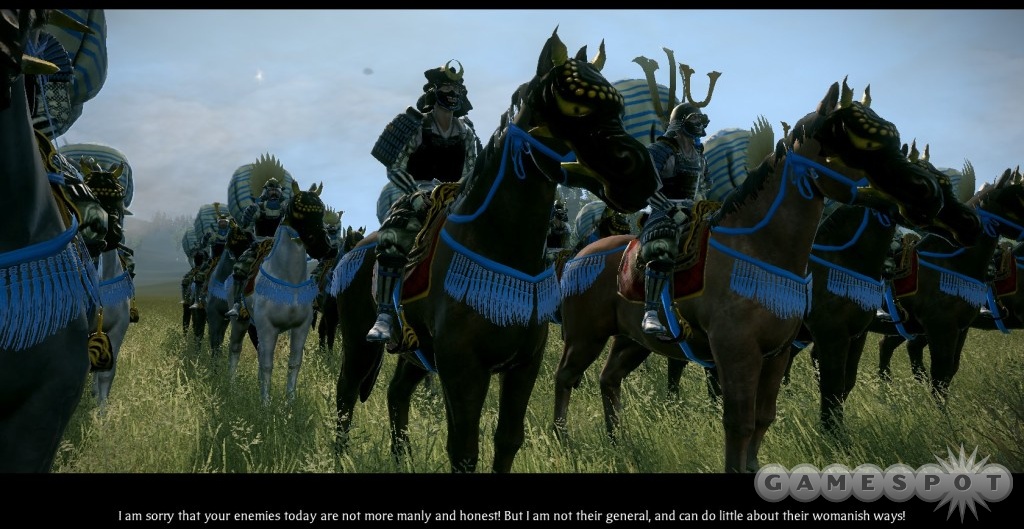
Such concerns coupled with the constant barrage of special events and natural disasters are problematic enough, but the tricky issue of religion is added to this explosive mix. Allowing Nanban, or European, merchants into your cities lets you field units with powerful matchlock firearms, but it also opens up your homogeneous Buddhist society to Christian influences. The growing Christian population has to be either appeased or subdued in some manner. One solution is for the clan to convert to Christianity to unlock powerful European cannons or carracks, but this would outrage the Buddhist population and bring dishonor to the daimyo. The best course of action is to ensure that the majority of the populace follows the daimyo's faith whether through conversion or isolationism. Angry religious minorities are an Achilles' heel for any daimyo, so religious and secular grievances must be kept to a minimum lest bloody rebellions ruin your chances of becoming shogun.
In Shogun 2, generals add another level of strategy, as well as some much-appreciated drama. Generals have always been important for maintaining troop morale in the Total War series, but they've never had as much character as in Shogun 2. For starters, generals now have a loyalty rating, and one could conceivably turn on you, especially if his overambitious wife is feeding him poisonous ideas. As a result, you need to find some way to keep them loyal. You might give them important positions in the clan, or bring them into your family through marriage or adoption (which works even if the general is only slightly younger than the daimyo). For example, a general's loyalty improves immensely once he has been entrusted with the clan's finances. It is vitally important to keep generals around for as long as possible because their combat experience can be used to gain a variety of new skills and followers for the clan's benefit. For instance, you could increase a general's poetry skill, giving your clan a research bonus and opening up the path for your general to become a "living treasure" capable of bringing unrestrained jubilation to any province he passes through. Alternatively, you may mold a general into a feared tyrant, an expert at siege warfare, or a near invincible legendary warrior. The general's retinue, which is increased every few levels, is equally diverse.
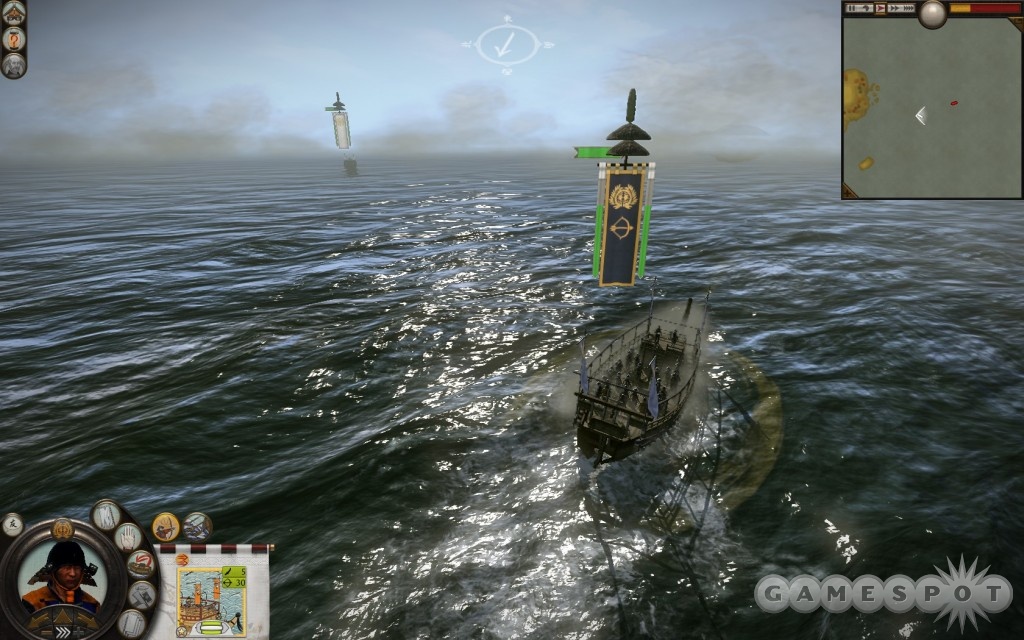
His retainers can be people, like a samurai master who gives a melee bonus to all units; animals, such as a lovable monkey; or even inanimate objects, like a Go board, which increases the general's command ability. These are all in addition to random traits that generals pick up during battles or through marriage. The "fecund wife" trait, which ensures that a general sires many children, is particularly useful for daimyos since they need heirs to carry on their legacy after death. The daimyo's male children will grow up to become fairly loyal generals, so you want to be blessed with a large brood. In addition to the generals, all special characters, such as the metsuke (inspectors), monks, ninjas, and geisha, gain experience points, skill traits, and a retinue. A Christian missionary, for example, can learn to become a scholar and aid his clan's chi research, or he can focus his efforts toward proselytizing for Christian faith with the help of his retinue of church notaries and Japanese converts.
Another important consideration is weather. On the campaign map, armies suffer significant attrition when outside of your territory during winter, so you must plan your campaigns with the seasons in mind, or risk losing samurai to frostbite. Likewise, fleets suffer heavy losses from attrition while outside of placid coastal waters. Weather also plays a major role during real-time battles. For instance, matchlock firearms and fire arrows are useless when it rains, and heavy fog can change the face of battle, enabling dramatic conflicts where diversionary assaults further obfuscate the true threat that bides its time in the dark mist.
The major addition to Shogun 2's multiplayer options is Avatar Conquest mode. In this mode, you create a persistent avatar who gains levels of experience as you play online skirmish battles. After creating your avatar, you gain access to the conquest map that divides Japan into numerous provinces, each of which grants a bonus of some kind, such as new unit types or improved reload speeds for bowmen. Once you've picked a province for your avatar to attack, you can join or host a multiplayer skirmish game. If you win the match, then your avatar conquers the province and receives the corresponding bonuses. Regardless of who wins, each player gains experience during these battles, which is then used to buy improvements for your avatar's leadership, bow mastery, physical, and melee-combat skills.
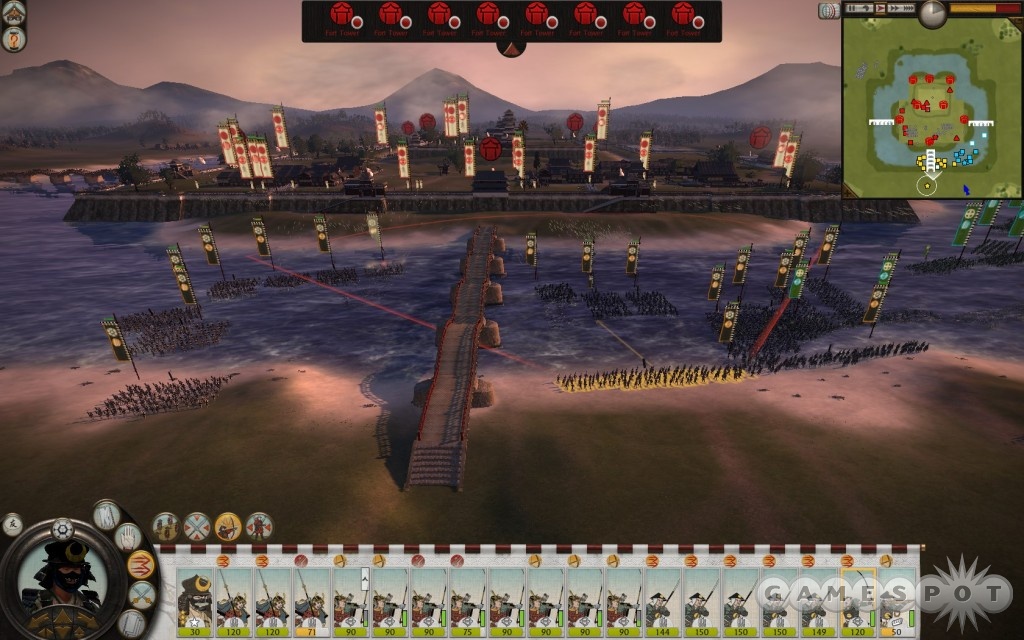
Avatars also receive new retainers and additional retinue slots as they level up. Similarly, individual units can achieve veteran status, becoming permanent and even gaining skills of their own. These veterans don't replenish their numbers after combat unless you let them rest for a few battles. The improved skills and experienced units don't feel unbalanced because each match has a gold limit that determines the maximum value of each fielded army. Since better generals and experienced units cost more to bring into a battle than ordinary units do, a new leader could overwhelm a heavily experienced army through sheer force of numbers. There is also a clan mechanic where clan-wide victories grant bonuses to each individual clan member. All of this makes Avatar Conquest mode more interesting than more traditional unranked skirmish battles (which are still available).
Multiplayer campaigns, which were first added to the series in Napoleon: Total War, are back in Shogun 2, which boasts both cooperative and versus multiplayer campaigns. Your ultimate goal in a versus campaign is to destroy the other player, and to further this goal, you can control any AI troops that your enemy fights on the battlefield. Cooperative campaigns won't let you play as the AI during your allies' battles, but it won't force you to passively watch during allied battles either. Now you have the ability to gift control of some units to your ally during battles. While Napoleon would auto-resolve conflicts where both players' armies were fighting as allies, Shogun 2 now lets you battle it out alongside each other. Assaulting the vast fortress of Kyoto with a friend is an amazingly entertaining experience. Not so entertaining are the stability problems that crop up during some multiplayer campaigns. On one of the three computers used for this review, Shogun 2's multiplayer campaign modes caused numerous inexplicable crashes. Crashes were much rarer for the other computers, making it possible to play a cooperative multiplayer campaign all the way through to the successful invasion of Kyoto without any issues.
Shogun 2 has improved upon Napoleon in several additional ways. First, Shogun 2 offers more options during skirmish battles. Skirmish mode now boasts 37 maps, three map types (land battle, naval battle, and siege), and various options regarding weather, seasons, and time of day. One additional new option is the ability to add "key buildings" to the map. These buildings grant bonuses to whichever side captures them, giving both sides good reason to eschew turtle tactics and sally forth. Furthermore, the artificial intelligence has been improved for both campaign and skirmish games. On the campaign map it can cleverly conceal its units, waiting within the woods and striking once your army leaves a keep underdefended. It also attempts amphibious invasions. During real-time battles, the AI is more capable than before and makes commendable attempts to smash your weakest flank. AI-controlled armies can be surprisingly effective during castle sieges and often attempt to divert your attention between multiple castle sections, obfuscating your opponent's true intentions. Unfortunately, on occasion the AI mysteriously "forgets" its plan and just marches troops around your castle walls aimlessly until your archers' persistence routes them from the battlefield. There doesn't appear to be a way to separate the campaign difficulty from the battle AI difficulty, so you are out of luck if you want to face hard AI on the battlefield while playing at normal campaign difficulty.
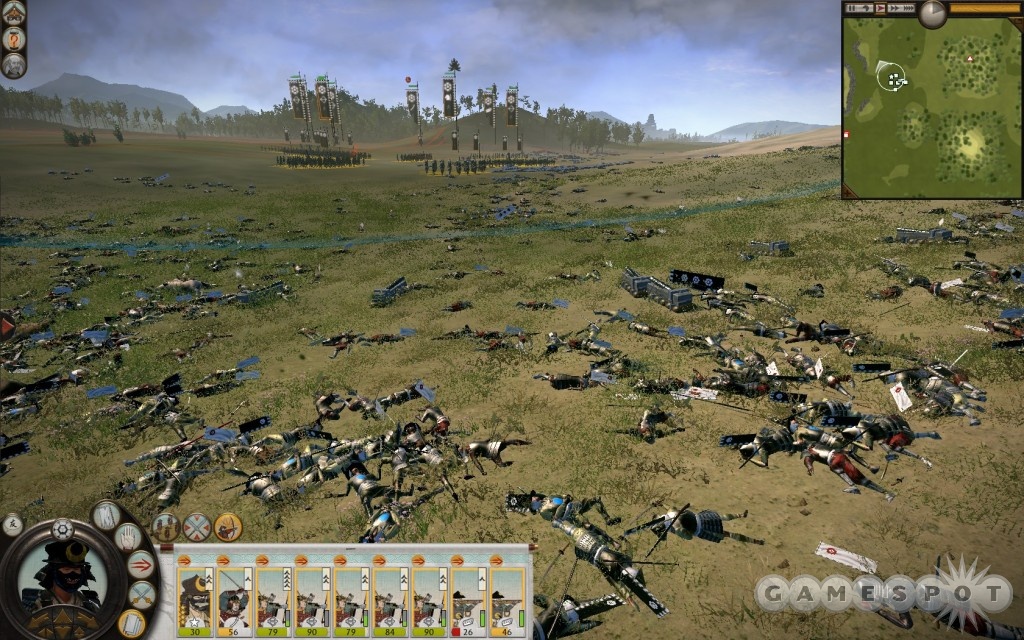
Stylistically, Shogun 2 is a visionary, coherent, and beautiful game. The rotatable campaign map is gorgeous and full of details, like tiny peasants moving their wares between provinces and cherry blossoms falling from the trees during autumn. Every unit or character is represented by an image card that looks like it came straight from a historical Japanese painting or woodcut, and the user interface is adorned with beautiful Japanese calligraphy. The graphics during battles are equally impressive, and even warriors in the same unit often have unique faces and armor. Shogun 2 is incredibly detailed: arrows stick in castle walls or boat hulls; corpses of men and horses cover the battlefield in silent testament to the price of your lust for power; and fire arrows, lanterns, and rockets light up the night sky. Complementing all of this are excellent sound effects and an effective score.
The captivating character of Shogun 2 doesn't end with its visuals. In cutscenes before each battle, generals give inspirational speeches to the troops, often focusing on themes like fealty or remaining fearless in the face of death. Subordinates bow when new orders are issued, an advisor laments the "shameful" behavior of retreating units, and unit formations have names like "reclining dragon" and "barking pine tree." All of this combines to give Shogun 2 a unique feel that is highly evocative of its historical setting. Shogun 2's delightful and all-encompassing world, coupled with its excellent production values, artful interface, deep strategic campaign, and thrilling real-time battles, makes it more impressive than its predecessor was a decade ago. Its only real flaw is the stability issue that occurred almost exclusively during multiplayer campaigns. Overall, Shogun 2 is just about everything you could want from a strategy game and is easily the apex of the Total War series up to this point.